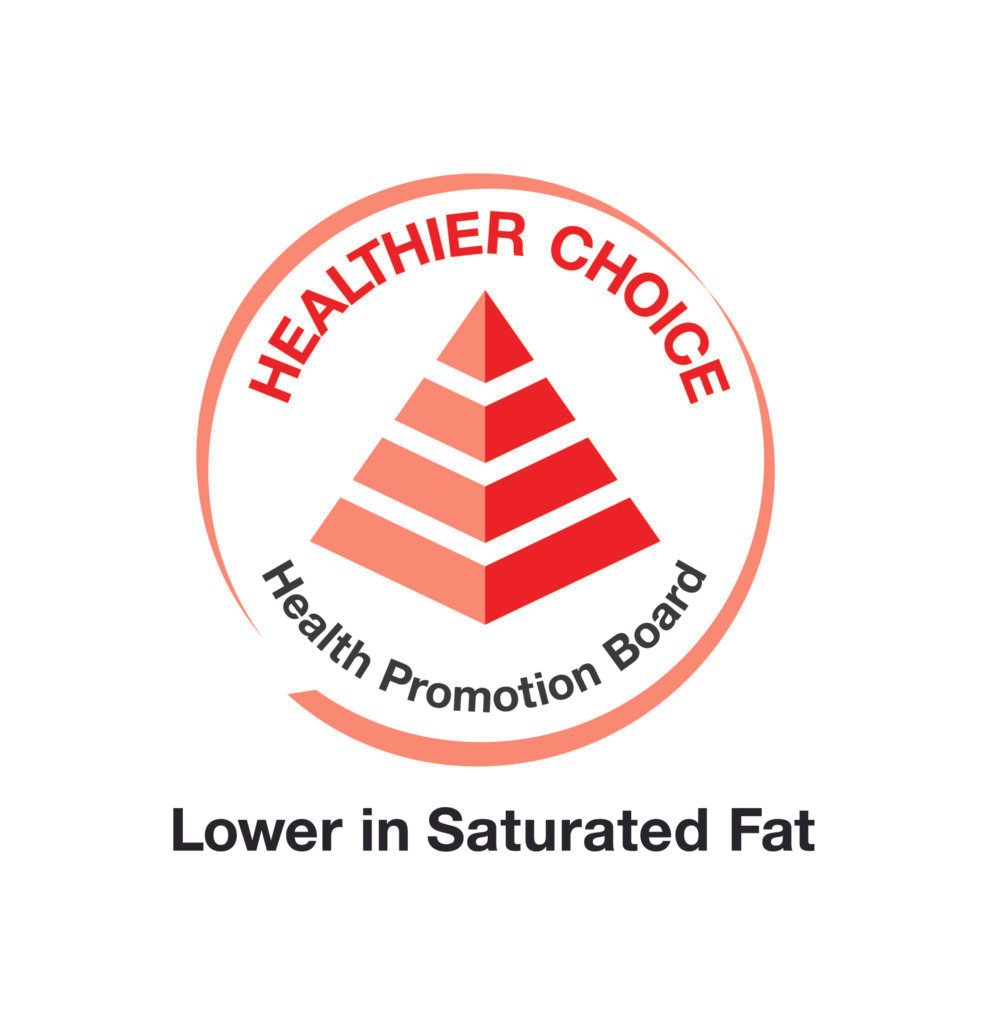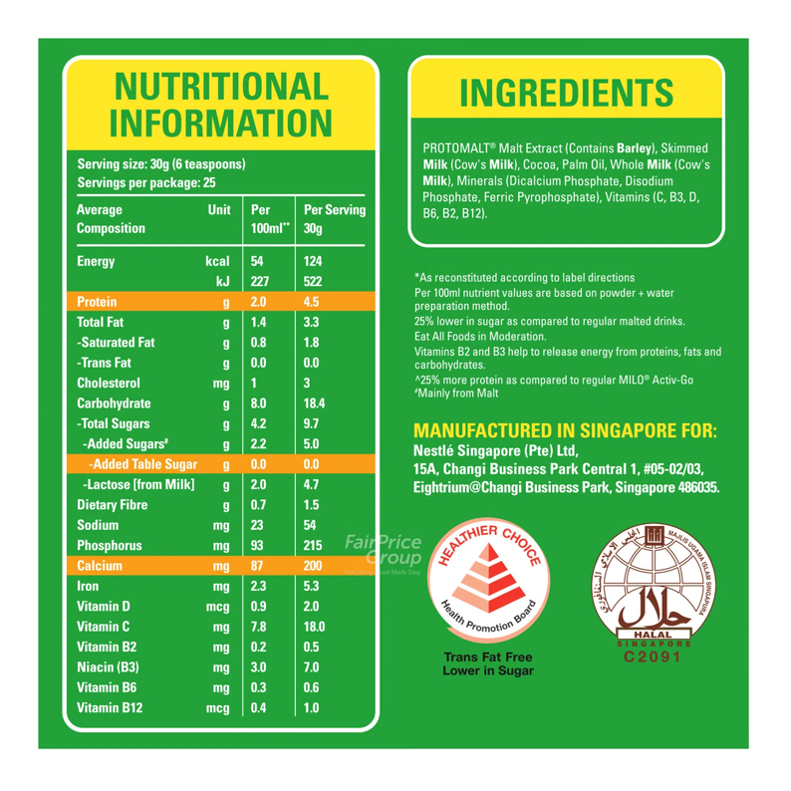The Healthier Choice Symbol: Why Simplified Labels Are Misleading
healthy choice or healither choice?

Don’t judge a book by its cover. It doesn’t mean a product with a healthier choice symbol means it’s healthier or better for you. It just means that it has lower sugar (or other ingredients) as compared to other products in the same category. Does not justify that the category itself is healthy.
Just because cigarette smoking kills more people than alcohol, doesn’t mean alcohol is healthier. Comprende?
Read More: What Is Nutri-Grade & What Are Its Benefits?
What Is The Healthier Choice Symbol?
Introduced in 1998 to encourage Singaporeans to select foods that are lower in sugar and to educate them on the importance of reducing sugar in their diet. The Healthier Choice Symbol (HCS) now covers over 100 food categories and about 4000 food products.

The healthier choice symbol (HCS) is synonymous with healthier foods and most Singaporean brains are hardwired to immediately select foods which have the healthier choice logo.
It has now expanded to hawkers, food vendors and F&B establishments to offer lower sodium, fat, and sugar options in its menu.
There Are 41 Different Healthier Choice Symbol (HCS) Taglines
If a food is lower in an “unhealthy” option, in its food category, it can apply to have the HCS. Some symbols include:
- Higher in Wholegrains
- Higher in Calcium
- Lower in Sugar
- No Added Sugar
- Sugar-Free
- Lower in Sodium
- No Added Sodium
- Lower in Saturated Fat
- Trans Fat-Free
- Low Glycemic Index
- Eat 2+2 Servings of Fruits and Vegetables Daily
- Less than 100 Calories
- Less than 200 Calories
Therefore, you should read the taglines alongside the HCS logo to determine what has been made “healthier”.
Read More: The Ultimate Guide To Running A Fast 2.4km
Simplified Nutrition Labels Do Not Replace Due Diligence
Just because a food product is X% lower, or its sugar content is 50% reduced, does not mean it is better. Think about it this way. If a drink contains 50g of carbohydrates, of which 45g is sugar. They reduced it by 50% and now it’s about 22.5g of sugar. That’s still a lot of sugar! But they still get awarded the healthier choice symbol (HCS).
Sure, a healthier choice label will signify that a food product has a reduction in “unhealthy” substances thus giving it a “reward” (which is the HCS) to show to the public that it has improved somehow.

Take Milo for example. A generic serving is 30g at 124 kcal (average male needs ~2500 kcal a day, female ~2000 kcal) with a meagre 4.5g of protein and 1.5g of dietary fibre.
A rule of thumb that we follow is that the carbohydrate-to-fibre ratio should be less than 10. Milo’s carbohydrate-to-fibre ratio is 12.3. It still has the healthier choice symbol because it is 25% lower in sugar as compared to regular malted drinks.
This means that compared to other malted drinks, it might be better. However, as a drink on its own, it not only lacks proper nutrition (even though it’s marketed as a sports drink), it is high in sugar and does nothing but just be a tasty chocolate drink. Also, note that the HCS tagline for milo is “trans-fat free” & “lower in sugar”. It doesn’t say that it’s a healthy drink, only that it is “healthier” than others in its category.
This is why you should still understand what your body requires and basic nutrition reading skills. This will allow you to be fully aware of what a food product contains as manufacturers do use words like “proprietary” & “blend” to hide certain ingredients that are not regulated by the government.
Read More: Want To Improve Your Health & Performance? Try Fermented Foods
Always Read The Complete Nutrition Label At The Back
Some manufacturers do try to cheat the nutrition label by heading it under a new name, or a less aggressive term. Nevertheless, you should at least read and understand the nutrition label that comes on every food product in Singapore.
It might get complicated for some and just downright troublesome for many. So here is what you need to know.
- Have 0g of trans fat
- Carbohydrate to fibre ratio should be less than 10
- Protein to kcal should be less than 10. (Using whey as a benchmark)
If you have health issues, your nutritionist should already have spoken to you about your nutrition guidelines. Regardless, try to look for high protein, high fibre, low calorie, low saturated fat & unprocessed foods as much as possible.
A healthy diet is not hard. What is hard is to have the mentality to stay on track and fight for what you want. You can always start first by learning how to read your nutrition label and remember, labels are just that – labels. Understanding what your food products consist of is the most important aspect of all.
Recent Posts
Related Articles
All You Need To Know: Whey Protein
From bodybuilders to healthcare professionals, everyone champions whey as an essential dietary...
ByBrent Wong14 December 2023How To Trick Your Body Into Not Eating Too Much?
Hunger has always been a bane to mankind since the dawn of...
ByBrent Wong28 November 2023Why Does Your Protein Bottle Stink, And How To Fix It
You just finished your workout and are about to grab your shaker...
ByBrent Wong23 October 2023Want To Lose Weight Without Counting Calories? Here’s How.
About 11% of Singaporeans aged 18-70 are obese, with around 28% having...
Byaktivintel.com27 September 2023











Leave a comment